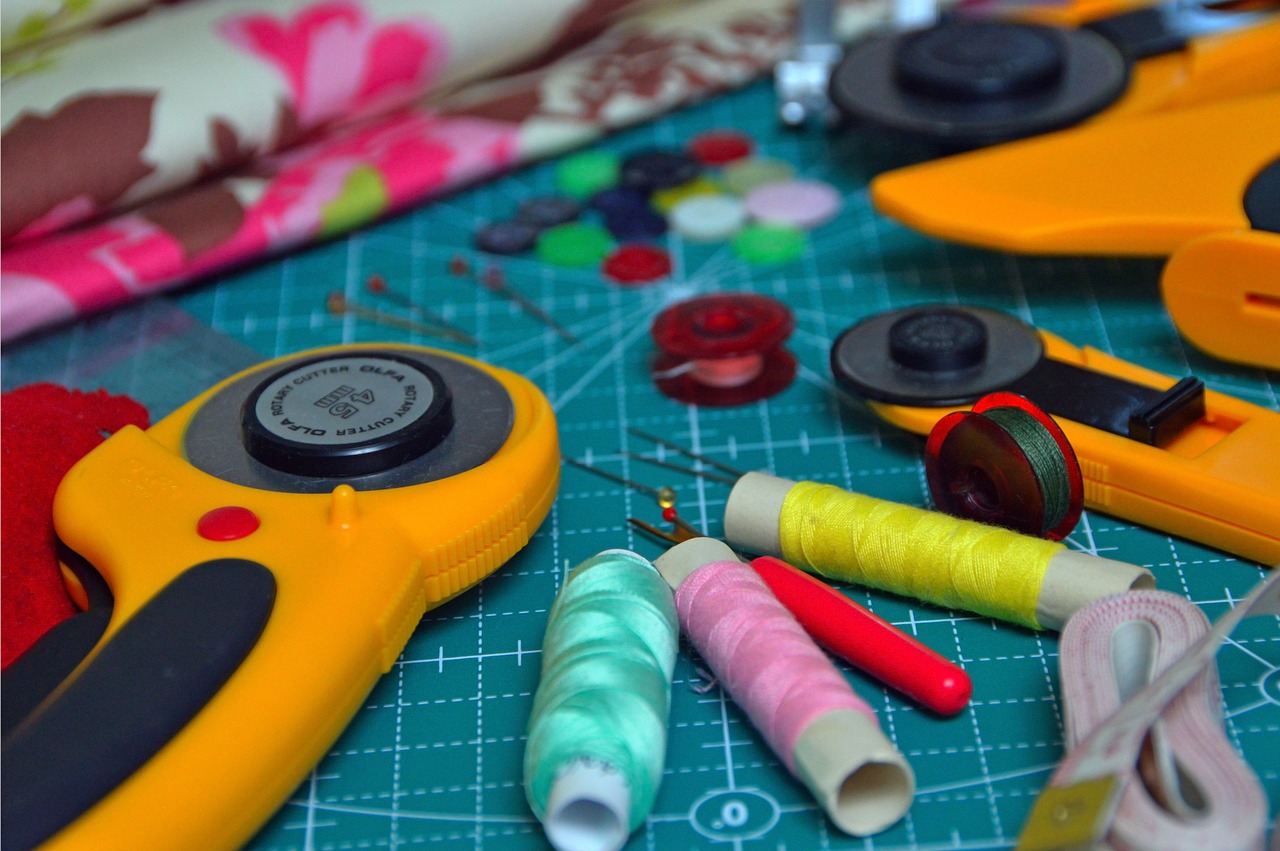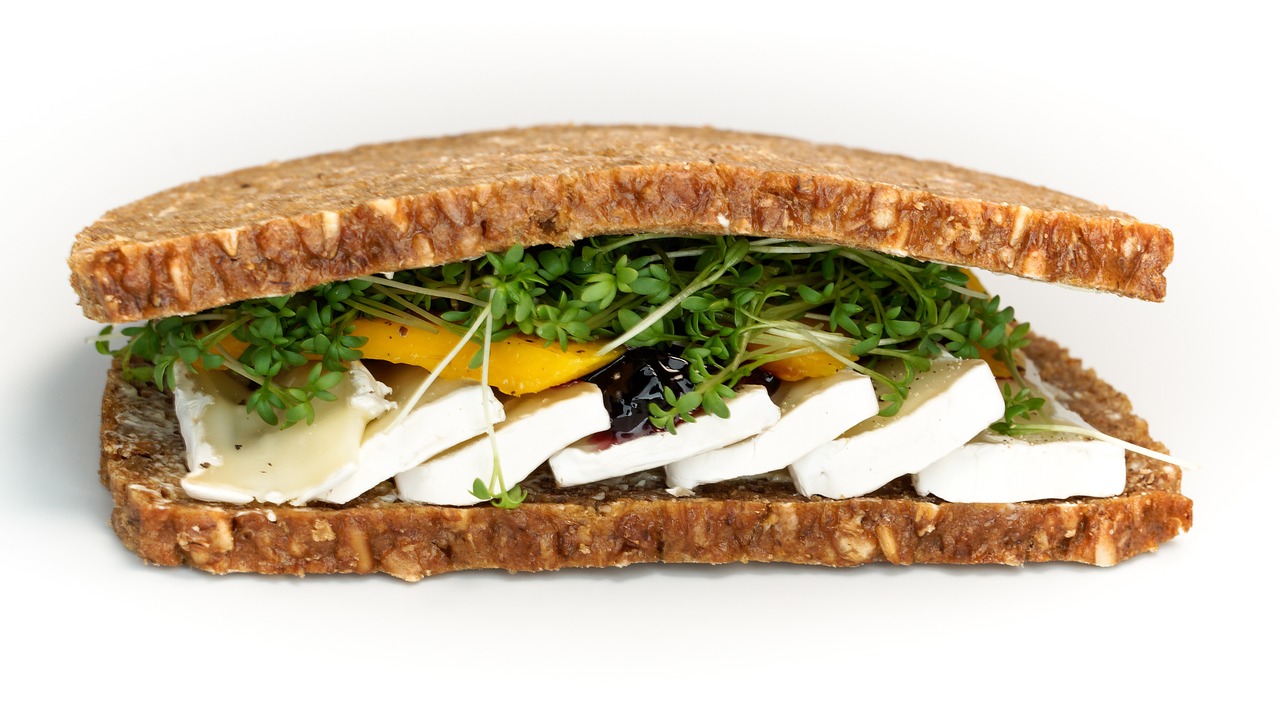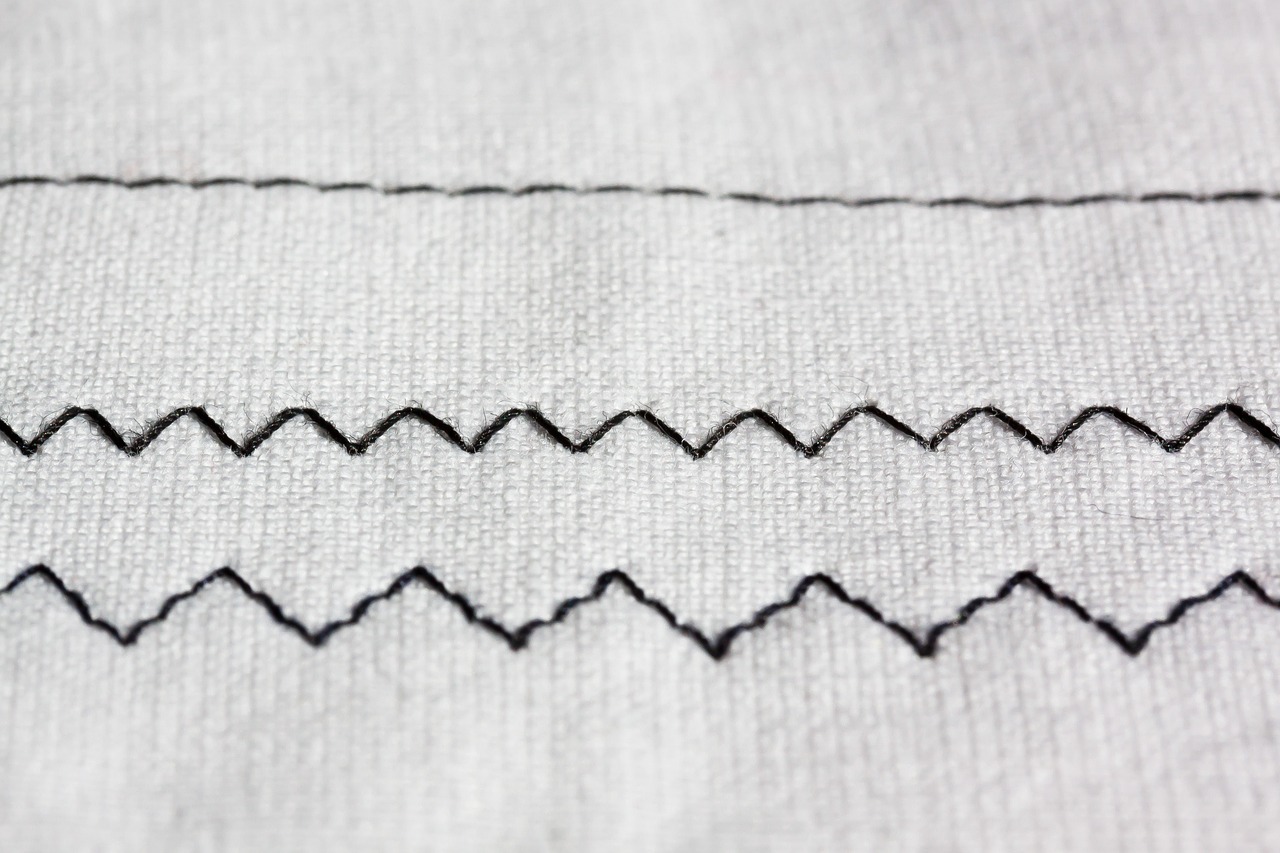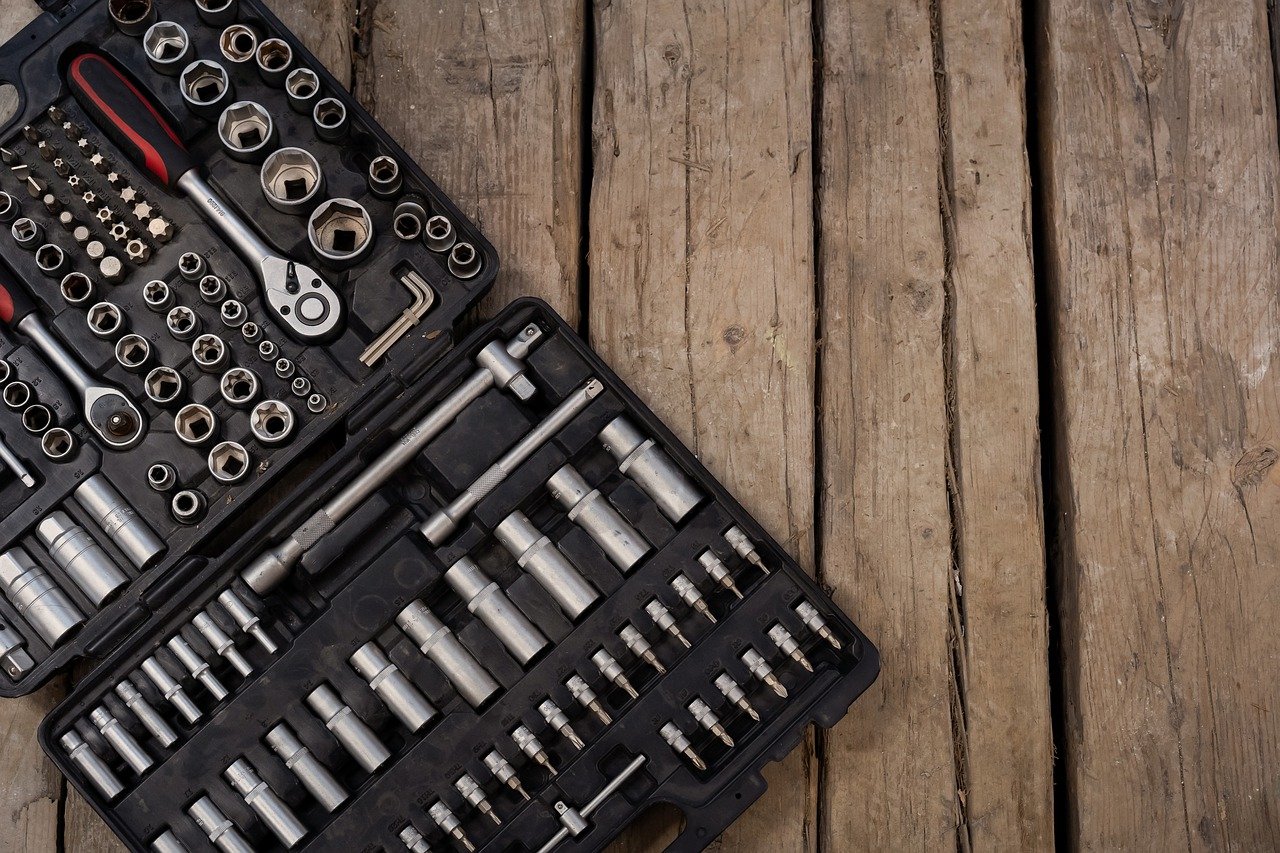The Basics of Free-Motion Quilting: A Tutorial
This article will guide beginners through the essentials of free-motion quilting, covering techniques, tools, and tips to help you create beautiful quilted designs with confidence.
Free-motion quilting is like giving your sewing machine a dance partner! It allows you to move the fabric freely under the needle, creating intricate designs that reflect your personal style. Unlike traditional quilting methods, which often rely on straight lines and predetermined patterns, free-motion quilting opens up a world of creativity, letting you express yourself through every stitch. This technique has roots that trace back to the early days of quilting, but it has exploded in popularity among modern quilters who crave artistic freedom. So, what makes it so appealing? Imagine being able to doodle on fabric just as you would on paper—it's that liberating!
Before diving into the world of free-motion quilting, it's crucial to gather the right tools. Think of your sewing machine as your trusty steed; without the right gear, you won't get far. Here’s a quick rundown of the essentials:
- Sewing Machine: A machine that can handle free-motion quilting is a must. Look for one with a drop feed feature.
- Quilting Feet: A darning foot or free-motion foot is essential for controlling the fabric as you stitch.
- Threads: Invest in high-quality threads that won’t break easily. Cotton threads are often preferred for their strength and finish.
- Fabric Types: Choose fabrics that are easy to manipulate, such as cotton or cotton blends.
With these tools in hand, you're well on your way to creating stunning quilted masterpieces!
Now that you've got your tools ready, let's talk about the quilt sandwich—no, not the kind you eat! A well-prepared quilt sandwich consists of three layers: the quilt top, batting, and backing. Think of it as the foundation of your quilt. Each layer plays a vital role in ensuring your quilting experience is smooth and successful. Start by laying your quilt top face up, then place the batting on top, followed by the backing fabric, which should be placed face down. Secure all layers together using safety pins or basting spray to prevent shifting as you quilt. This stability is key to achieving those beautiful, even stitches that will make your quilt shine!
Setting up your sewing machine for free-motion quilting is like tuning an instrument before a concert. Proper machine setup is essential for achieving the best results. Start by adjusting the tension; you want it just right to avoid thread breakage or looping on the back of your quilt. Next, select the right needle—typically a size 90/14 or 80/12 quilting needle works well. Finally, attach your darning foot and lower the feed dogs to allow for free movement of the fabric. Following these steps will set you up for success and make the quilting process much more enjoyable!
Once your machine is set up, it’s time to get your hands moving! Mastering basic techniques is the foundation of free-motion quilting. Start with simple movements like stippling, which resembles a continuous line of loops, or meandering, which allows for more fluid, organic shapes. These techniques are great for building your confidence and skill. Remember, practice makes perfect! As you become more comfortable, you'll find that your creativity will flourish, allowing you to explore more intricate designs.
Now that you’ve got the basics down, it’s time to unleash your creativity! Custom designs are where the magic happens. Think of your quilt as a blank canvas waiting for your unique touch. Start by sketching out your ideas on paper before transferring them to fabric. This planning stage can help you visualize your patterns and make adjustments as needed. Don’t be afraid to experiment—after all, quilting is about personal expression. Whether it’s floral motifs, geometric patterns, or whimsical doodles, the possibilities are endless!
Even the most seasoned quilters encounter hiccups along the way. Common issues like thread breakage or uneven stitches can be frustrating, but don’t let them deter you! If you experience thread breakage, check your needle for damage and ensure your thread is properly threaded through the machine. For uneven stitches, it may be a matter of adjusting your tension or ensuring your quilt sandwich is securely basted. Remember, every challenge is an opportunity to learn and grow as a quilter!
Proper maintenance of your quilting equipment is crucial for longevity. Just like you wouldn’t drive a car without regular oil changes, your sewing machine deserves the same care. Regularly clean your machine by removing lint and dust, and oil it according to the manufacturer's instructions. Additionally, store your quilting supplies in a cool, dry place to prevent damage. Taking these steps will ensure that your tools remain in excellent condition, ready for your next quilting adventure!
Q: Can I use any sewing machine for free-motion quilting?
A: Not all machines are created equal! Look for a machine that has a drop feed feature and can handle free-motion quilting feet.
Q: What type of fabric is best for beginners?
A: Cotton fabric is often recommended for beginners due to its ease of handling and forgiving nature.
Q: How do I prevent thread breakage?
A: Ensure that your needle is suitable for quilting, your thread is of high quality, and your machine is properly threaded.
Q: Can I create my own designs?
A: Absolutely! Once you’re comfortable with the basics, feel free to experiment and create custom designs that reflect your style.

Understanding Free-Motion Quilting
Free-motion quilting is a fascinating technique that opens up a world of creative possibilities on fabric. Unlike traditional quilting, where the sewing machine moves in a straight line, free-motion quilting allows you to move the fabric freely under the needle. This means you can create intricate designs, swirls, and patterns that are limited only by your imagination. Think of it as painting with thread; each stitch is a brushstroke that contributes to the overall masterpiece.
The roots of free-motion quilting can be traced back to the early days of quilting, where artisans sought ways to embellish their creations. Over time, this technique evolved, gaining popularity among modern quilters who appreciate the artistic freedom it offers. Today, free-motion quilting is celebrated for its ability to transform a simple quilt into a stunning work of art, making it a go-to choice for those who want to express their unique style.
So, what sets free-motion quilting apart from traditional methods? Well, in traditional quilting, the focus is often on piecing together fabric blocks and stitching them in a structured manner. In contrast, free-motion quilting encourages a more relaxed and spontaneous approach. You can create flowing lines, detailed motifs, or even abstract designs, all while enjoying the process of quilting. It’s like dancing with your sewing machine, where every movement is fluid and expressive.
Moreover, free-motion quilting has a unique appeal for modern quilters. It allows for personalization and customization, giving you the freedom to make each quilt a reflection of your personality. Whether you're a beginner or an experienced quilter, the thrill of trying out new techniques and seeing your vision come to life is incredibly rewarding. Just imagine the joy of completing a quilt that not only keeps you warm but also showcases your creativity!
In conclusion, free-motion quilting is more than just a sewing technique; it’s a form of artistic expression that invites you to explore your creativity. By breaking away from the constraints of traditional quilting, you can discover a new dimension of quilting that is both exciting and fulfilling. So, grab your sewing machine, and let’s embark on this creative journey together!

Essential Tools and Materials
Before diving into the world of free-motion quilting, it's crucial to gather the right tools and materials. Think of it as assembling your secret weapon for creativity! Just like a chef needs the right knives and ingredients to whip up a masterpiece, you need specific quilting supplies to bring your fabric visions to life. The essentials include a reliable sewing machine, a specialized quilting foot, quality threads, and the right type of fabric. Each of these components plays a vital role in achieving stunning results.
Your sewing machine is the heart of your quilting journey. While many machines can handle basic sewing tasks, not all are equipped for free-motion quilting. Look for a machine that has a good reputation for handling layers of fabric and offers a smooth feed. You might want to consider machines with a larger throat space, as this gives you more room to maneuver your fabric. It's like having a spacious kitchen where you can chop, mix, and bake without feeling cramped!
Next up is the quilting foot, often referred to as a darning foot. This little tool is essential for free-motion quilting because it allows you to move your fabric freely in any direction. Unlike a regular presser foot, the darning foot lifts up and down, giving you the freedom to create intricate designs. Make sure it fits your machine properly; otherwise, it might just be a pretty paperweight!
Now, let’s talk about threads. Not all threads are created equal, and choosing the right one can make a world of difference in your quilting projects. Opt for high-quality cotton threads, as they provide durability and a beautiful finish. You can experiment with different weights and colors to add depth and dimension to your quilts. Imagine layering flavors in a dish; the right thread can elevate your quilt from ordinary to extraordinary!
When it comes to fabric, the type you choose can significantly impact your quilting experience. Quilting cotton is a popular choice due to its sturdiness and ease of handling. However, don't shy away from experimenting with other fabrics like flannel or batiks for unique textures and visual appeal. Just remember, the fabric should be pre-washed to prevent any surprises later on, like shrinking or color bleeding. It's like preheating your oven before baking; it sets the stage for success!
To wrap up this section, let’s summarize the essential tools and materials you’ll need:
- Sewing Machine: A reliable model with good feed and ample throat space.
- Quilting Foot: A darning foot that allows free movement of fabric.
- Threads: High-quality cotton threads in various weights and colors.
- Fabric: Quilting cotton is recommended, but feel free to explore other options.
With these tools in hand, you’re well on your way to creating beautiful quilts! Remember, the right materials can inspire your creativity and make the quilting process enjoyable. So gather your supplies, and let’s get ready to stitch up some magic!

Preparing Your Quilt Sandwich
Creating a quilt sandwich is like laying the foundation for a house; it’s the essential step that ensures everything else stands strong. The quilt sandwich consists of three layers: the quilt top, the batting, and the backing. Each layer plays a vital role in the overall quality and appearance of your finished quilt. So, let’s dive into how to prepare your quilt sandwich effectively!
First, you’ll want to start with a clean and flat workspace. This is crucial because any wrinkles or bumps can lead to uneven stitching later on. Lay out your backing fabric first, right side down, making sure it’s larger than your quilt top. You want to give yourself some wiggle room. If you imagine your quilt as a cake, the backing is like the plate it sits on—large enough to catch any drips!
Next, it’s time to add the batting. Batting is the fluffy layer that gives your quilt warmth and dimension. You can choose from various types of batting, such as cotton, polyester, or a blend. Each type has its own characteristics, so choose one that suits your project. Spread the batting over your backing fabric, ensuring it is also larger than your quilt top. Smooth it out gently to eliminate any lumps, as these can create bumps in your quilting.
Now comes the exciting part: placing your quilt top! Lay your quilt top, right side up, on top of the batting. Make sure everything is aligned properly, and smooth out any wrinkles. It’s essential to ensure that all three layers are flat and even. If you find any creases, gently lift the top layer and smooth it out before laying it back down. Think of this step as making a sandwich; you want all the layers to be neatly stacked without any surprises!
Once your layers are aligned, it’s time to secure them. You can use safety pins, basting spray, or even large stitches to hold everything in place. If you’re using pins, make sure to place them about 4 to 6 inches apart to prevent shifting while you quilt. Basting is like giving your sandwich a good hug—keeping everything together while you work your magic with the sewing machine!
After securing your layers, check for any puckering or unevenness. If you find any, now is the time to adjust before you start quilting. A well-prepared quilt sandwich will not only make your quilting experience smoother but also enhance the final look of your quilt. Remember, a little time spent on preparation can save you a lot of headaches down the road!
In summary, preparing your quilt sandwich involves:
- Choosing a clean, flat workspace.
- Laying out the backing fabric first, right side down.
- Adding the batting on top of the backing.
- Placing the quilt top right side up on the batting.
- Securing all layers with pins, basting spray, or stitches.
By following these steps, you’ll set yourself up for success in your free-motion quilting journey. Remember, the quilt sandwich is the core of your project, and treating it with care will lead to beautiful results!
Q: What type of batting should I use for my quilt?
A: It depends on your project! Cotton batting is great for warmth and breathability, while polyester is durable and lightweight. Blends offer a balance of both.
Q: Can I use any fabric for the backing?
A: Yes! Just make sure it’s sturdy enough to support your quilt top and batting. Common choices include cotton and cotton blends.
Q: How do I prevent my quilt sandwich from shifting while I sew?
A: Securing your layers with safety pins or basting spray will help keep everything in place. Also, quilting in sections can minimize movement.

Setting Up Your Sewing Machine
Setting up your sewing machine for free-motion quilting is like preparing a canvas for painting. It’s crucial to ensure everything is just right before you dive into the creative process. The first step is to adjust the tension. Tension affects how the threads interlock, which is vital for achieving even stitches. Most machines have a tension dial, and you may need to experiment a bit to find the perfect setting. A good rule of thumb is to start with a medium tension and adjust as necessary.
Next up, you’ll want to select the right needle. A quilting needle is generally the best choice, as it has a tapered point that can easily pierce through multiple layers of fabric and batting without causing damage. Make sure your needle is sharp; a dull needle can lead to uneven stitches and frustration. If you notice skipped stitches or puckering, it might be time to replace your needle.
Now, let’s talk about the darning foot. This special foot allows you to move the fabric freely in any direction while you sew, which is essential for free-motion quilting. If your machine didn’t come with one, you can usually find a compatible darning foot at your local sewing supply store. Attach it securely, and don’t forget to lower the feed dogs. This will prevent the machine from automatically feeding the fabric, giving you complete control over your movements.
Before you start quilting, it’s important to do a test run. Grab some scrap fabric and batting, and practice your free-motion techniques. This will not only help you get a feel for the machine but also allow you to fine-tune the tension and ensure everything is set up correctly. It’s like warming up before a big performance – crucial for hitting all the right notes!
Lastly, ensure your workspace is well-lit and comfortable. Good lighting helps you see your stitches clearly, while a comfortable chair will keep you focused on your quilting rather than on discomfort. Remember, a relaxed and well-prepared environment can make all the difference in your quilting experience.
- What type of sewing machine is best for free-motion quilting? A machine with adjustable speed and a darning foot is ideal.
- How do I know if my tension is set correctly? Test on scrap fabric; the stitches should look even on both sides.
- Can I use my regular sewing foot for free-motion quilting? It's recommended to use a darning foot for better control.

Basic Free-Motion Techniques
When diving into the world of free-motion quilting, mastering the basic techniques is essential. Think of it as learning to walk before you run. Free-motion quilting allows you to move the fabric freely under the needle, giving you the freedom to create intricate designs that traditional quilting methods simply can't achieve. But where do you start? Let’s explore some foundational movements that will set you on the path to quilting greatness!
One of the most fundamental techniques in free-motion quilting is stippling. This technique involves creating a series of small, curvy lines that flow in and out of each other, similar to the way a river meanders through a landscape. Stippling is not only visually appealing but also serves a practical purpose: it helps to secure the layers of your quilt together. To begin stippling, practice moving your fabric in a continuous motion, allowing the needle to create a series of loops and curves. It may feel awkward at first, but with practice, you'll find a rhythm that feels natural.
Another popular technique is meandering, which is often confused with stippling but offers a bit more freedom. With meandering, you can create larger, more open shapes that can vary in size and direction. Imagine drawing a doodle on paper; you’re not confined to a specific path, and that’s the beauty of meandering. To practice this technique, try moving your fabric in a random pattern, allowing your needle to create swirls and arcs without worrying too much about uniformity. This is where your creativity can really shine!
As you gain confidence, you might want to explore other basic movements such as echo quilting and spirals. Echo quilting involves creating a series of lines that follow the contours of a shape, similar to ripples in a pond. This technique can add depth and texture to your projects, making them visually stunning. On the other hand, spirals are great for adding a dynamic element to your quilting. Start small and gradually make your spirals larger as you become more comfortable with the motion.
To help you visualize these techniques, here’s a quick comparison table:
| Technique | Description | Best For |
|---|---|---|
| Stippling | Small, continuous curves | Securing layers |
| Meandering | Random, larger shapes | Creative designs |
| Echo Quilting | Lines following a shape | Adding depth |
| Spirals | Concentric circles | Dynamic patterns |
Remember, practice is key in mastering these techniques. Don’t hesitate to experiment with different thread colors and fabric types to see how they influence your designs. The more you practice, the more comfortable you’ll become, and soon you’ll be able to combine these techniques to create stunning, one-of-a-kind quilted pieces. So grab your machine, set up your quilt sandwich, and let your creativity flow!
Q: How long does it take to master free-motion quilting?
A: Mastery varies from person to person, but with consistent practice, you can see significant improvement in a few weeks.
Q: Do I need a special sewing machine for free-motion quilting?
A: While you can use most sewing machines, having a machine with a drop feed feature and a darning foot will make the process easier.
Q: Can I use any type of thread for free-motion quilting?
A: It's best to use high-quality thread that is designed for quilting to avoid breakage and ensure smooth stitching.

Creating Custom Designs
Now that you've got the hang of the basics, it's time to unleash your inner artist and start that truly reflect your personality and style! Free-motion quilting is all about creativity and expression, allowing you to turn your fabric into a canvas where your imagination can run wild. But how do you begin this exciting journey?
First, consider what inspires you. It could be anything from nature, geometric shapes, or even your favorite piece of art. To kickstart your creativity, try sketching out some designs on paper before you even touch the fabric. This is like creating a blueprint for your quilt, giving you a visual guide to follow as you work. Remember, it’s perfectly fine to borrow ideas from other quilters or sources, but make sure to inject your unique flair into your designs.
When planning your custom design, think about the scale of your patterns. Larger designs can create a dramatic effect, while smaller, intricate patterns can add detail and texture. It’s essential to consider the size of your quilt and how the design will fit into the overall look. For instance, if you're working on a large quilt, you might want to opt for bolder, larger motifs, while smaller quilts can handle more delicate, intricate designs.
As you begin quilting, don’t forget about the importance of practice. Before diving into your final project, spend some time practicing your designs on scrap fabric. This will help you get a feel for the movements and techniques you’ll need to master to execute your vision flawlessly. Remember, free-motion quilting is a skill that improves with time and experience, so be patient with yourself!
Another great tip is to use marking tools to guide your quilting. You can use fabric markers, chalk, or even wash-away pens to outline your designs on the quilt top. This method can be especially helpful for intricate patterns where precision is key. Just make sure to test your marking tools on a scrap piece of fabric to ensure they wash out completely without leaving any residue.
Once you've practiced and marked your design, it's time to quilt! As you work, keep your hands relaxed and maintain a steady speed. You want to avoid rushing, as this can lead to uneven stitches and frustration. Instead, think of your sewing machine as an extension of your hands, guiding it smoothly across the fabric. Remember, the more you practice, the more natural it will feel.
Finally, embrace the idea that not every design will come out perfect on the first try. In fact, some of the most beautiful quilts have unique quirks and imperfections that tell a story. If something doesn’t go as planned, don’t sweat it! Consider it a learning experience, and maybe even an opportunity to incorporate new ideas into your future projects.
In summary, creating custom designs in free-motion quilting is all about exploration and expression. By experimenting with your ideas, practicing diligently, and embracing imperfections, you’ll be well on your way to crafting stunning, personalized quilts that you’ll cherish for years to come!
- What tools do I need for creating custom designs? You’ll need a sewing machine with a free-motion foot, quilting threads, fabric markers, and lots of practice fabric to start experimenting.
- How do I come up with design ideas? Look for inspiration in nature, art, or even other quilts. Sketching your ideas can help you visualize them before you start quilting.
- What if my design doesn’t turn out as expected? That’s perfectly okay! Quilting is a learning process, and sometimes the best designs come from happy accidents.

Troubleshooting Common Issues
Even the most seasoned quilters encounter hiccups along their creative journey, and free-motion quilting is no exception. Whether you're just starting or have been stitching for years, it’s essential to know how to tackle common problems that may arise. Let's dive into some frequent issues quilters face and how to effortlessly resolve them, ensuring your quilting experience remains enjoyable and productive.
One of the most common frustrations is thread breakage. This can occur for a variety of reasons, from using the wrong type of thread to improper tension settings. If you notice your thread snapping frequently, start by checking the thread quality. Opt for high-quality threads designed for quilting, as they’re less prone to breakage. Additionally, ensure that your tension is set correctly; too tight can lead to breakage, while too loose can cause uneven stitching. A quick test on a scrap piece of fabric can help you find the sweet spot.
Another issue that often plagues quilters is uneven stitches. This can be frustrating, especially if you’re aiming for a polished look. Uneven stitches can stem from a few factors, including inconsistent speed when moving the fabric or inadequate support for the quilt sandwich. To combat this, practice moving your fabric at a steady pace and consider using a quilting table or extension to provide ample support for larger projects. Remember, practice makes perfect, and the more you quilt, the more control you’ll gain over your stitching.
It's also important to keep an eye on your machine maintenance. Neglecting to clean your sewing machine can lead to a buildup of lint and debris, which can affect its performance. Regularly check and clean the bobbin area, feed dogs, and needle plate to maintain smooth operation. A well-maintained machine not only enhances your quilting experience but also extends the life of your equipment.
If you find that your quilting foot is leaving marks or impressions on your fabric, this could be due to the foot being too tight against the fabric. Adjusting the height of your darning foot can help alleviate this issue. Additionally, consider using a free-motion quilting foot that is designed to glide smoothly over fabric, reducing the risk of snagging or marking.
Lastly, don’t forget about thread tension. If your top thread is looping on the back of your fabric, it’s a sign that your tension might be too loose. Conversely, if the back thread is showing on the top, it could be too tight. Adjusting the tension dial on your machine can often solve this issue. Remember to test your adjustments on a scrap piece of fabric to ensure you’re achieving the desired results before diving into your project.
In summary, troubleshooting common issues in free-motion quilting is all about understanding your machine, the materials you're using, and practicing patience. By addressing thread breakage, uneven stitches, and maintaining your equipment, you can overcome these challenges and focus on what truly matters—creating beautiful quilted designs that showcase your unique style.
- What should I do if my thread keeps breaking?
Check the quality of your thread, adjust the tension, and ensure you are using the correct needle for your fabric type. - How can I fix uneven stitches?
Practice moving your fabric at a consistent speed and ensure your quilt sandwich is properly supported. - How often should I clean my sewing machine?
It’s recommended to clean your machine after every few quilting sessions to prevent lint buildup. - Why are there marks on my fabric from the quilting foot?
Adjust the height of your darning foot and ensure you’re using a foot designed for free-motion quilting.

Maintaining Your Quilting Equipment
Maintaining your quilting equipment is essential for ensuring that your projects turn out beautifully and that your tools last for years to come. Just like a well-tuned engine keeps a car running smoothly, regular care for your sewing machine and quilting supplies can make all the difference in your quilting experience. So, what exactly should you be doing to keep your quilting gear in top shape?
First and foremost, cleaning your sewing machine is crucial. Dust and lint can accumulate in the machine, leading to poor performance. Make it a habit to clean your machine after every few projects. Use a small brush or a vacuum attachment designed for sewing machines to gently remove debris from the bobbin case and feed dogs. Additionally, consult your sewing machine’s manual for specific cleaning instructions, as different machines may have unique requirements.
Next, don't forget about the importance of oiling your machine. Most sewing machines require oiling at regular intervals to keep the internal parts moving smoothly. Check your manual to see how often this should be done and which type of oil is recommended. A well-oiled machine will run more quietly and efficiently, allowing you to focus on your quilting rather than worrying about mechanical issues.
Another key aspect of maintenance is checking and replacing your needles regularly. Needles can dull or break, which can lead to uneven stitching and frustration. It’s a good practice to change your needle after every project or every 8 hours of sewing. Using the right needle type for your fabric is also vital; for instance, a universal needle works for most fabrics, but a quilting needle is specifically designed for quilting and can make a significant difference in your results.
Lastly, consider the care of your quilting supplies, such as rotary cutters, mats, and rulers. Keep your rotary blades sharp, as dull blades can cause fabric fraying and uneven cuts. Store your cutting mats flat and avoid exposing them to direct sunlight, which can warp them over time. For rulers, clean them with a soft cloth to remove any sticky residue that may affect your cutting accuracy.
By following these simple maintenance tips, you can ensure that your quilting equipment remains in excellent condition, allowing you to create stunning quilts with ease. Remember, taking care of your tools is not just about prolonging their life; it’s also about enhancing your quilting experience. After all, a happy quilter is a productive quilter!
- How often should I clean my sewing machine? It's recommended to clean your machine after every few projects, or at least once a month if you sew frequently.
- What type of oil should I use for my sewing machine? Always refer to your sewing machine's manual for the recommended oil type. Generally, a lightweight sewing machine oil is suitable.
- When should I replace my rotary cutter blade? Replace your rotary cutter blade when you notice it tearing or fraying fabric instead of cutting cleanly.
- Can I use the same needle for all types of fabric? While a universal needle works for many fabrics, using the appropriate needle type for specific fabrics can significantly improve your results.
Frequently Asked Questions
- What is free-motion quilting?
Free-motion quilting is a technique that allows you to move the fabric freely under the needle of your sewing machine, enabling you to create intricate designs and patterns without following a set path. It’s a fantastic way to express your creativity on fabric!
- Do I need special tools for free-motion quilting?
Yes, you will need a few essential tools, including a sewing machine capable of free-motion quilting, a darning foot or free-motion foot, quilting thread, and various types of fabric. Having the right tools will make your quilting experience smoother and more enjoyable.
- How do I prepare my quilt sandwich?
Preparing your quilt sandwich involves layering your quilt top, batting, and backing fabric. Make sure to smooth out any wrinkles and secure the layers together with safety pins or basting spray to ensure stability while quilting.
- What settings should I use on my sewing machine?
For free-motion quilting, you'll want to lower your feed dogs, adjust the tension to suit your thread and fabric, and use a needle appropriate for your fabric type. Experimenting with these settings will help you find the perfect combination for your projects.
- Can I create my own designs?
Absolutely! Once you're comfortable with the basic techniques, feel free to experiment with your own patterns and designs. The sky's the limit when it comes to creativity in free-motion quilting!
- What should I do if I encounter thread breakage?
Thread breakage can be frustrating, but it’s often due to incorrect tension, using the wrong needle, or poor quality thread. Check these factors and make adjustments as needed to minimize this issue.
- How do I maintain my quilting equipment?
Regular maintenance is key! Clean your sewing machine after each project, oil it as recommended, and check for any lint or debris. Also, keep your quilting tools organized and in good condition to ensure they last for many quilting adventures.



















